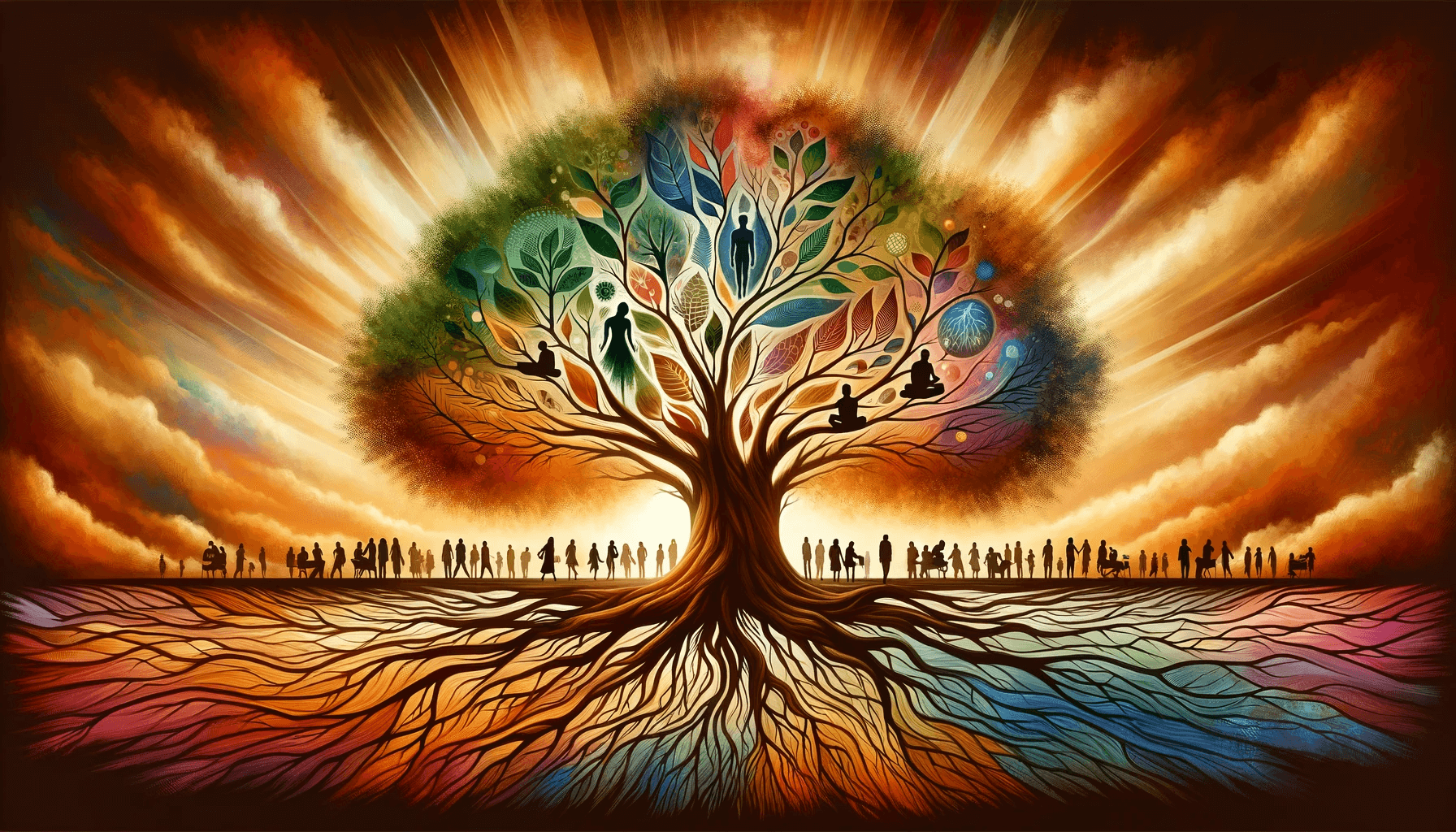Sponsor Get Your Ex Back
Table of Contents
What is Hypergamy?
Hypergamy refers to seeking a partner of higher social or economic status than oneself. It is a concept deeply rooted in evolutionary psychology, where individuals are driven to choose mates based on qualities that enhance their chances of reproductive success. Hypergamy can be seen as the inclination to marry “up” the social ladder. While it is often associated with women seeking partners of higher status, hypergamy can also apply to men.
The History of Hypergamy
The concept of hypergamy can be traced back to ancient civilizations. In many societies, marrying into a higher social class was seen as a way to improve one’s status and ensure future generations’ prosperity. For women, marrying up meant gaining access to resources and protection, while for men, it meant aligning with powerful families or acquiring wealth through marriage.
Throughout history, hypergamy has been reinforced by cultural norms, laws, and religious beliefs. In some societies, arranged marriages were common, with families strategically selecting partners to maintain or improve social standing. However, hypergamy took on new forms as societies evolved and became more complex.
The Evolutionary Psychology Behind Hypergamy
From an evolutionary perspective, hypergamy can be seen as a result of natural selection. Women, in particular, are inclined to choose partners who possess qualities perceived as indicators of genetic fitness and the ability to provide resources for offspring. These qualities include physical attractiveness, intelligence, ambition, and social status.
The theory of parental investment can explain this preference for high-status partners. Women, who have limited reproductive opportunities compared to men, are more selective in choosing mates because they invest more time, energy, and resources in raising children. By selecting partners who offer genetic advantages and access to resources, women increase the likelihood of their offspring’s survival and success.
On the other hand, men are more likely to exhibit hypergamous tendencies when it comes to physical attractiveness. This is because physical attractiveness indicates fertility and good health in potential female partners, enhancing the chances of successful reproduction.
Hypergamy in Different Cultures
Hypergamy, the practice or action of marrying a person of a superior caste or class, manifests differently across various cultures and is influenced by historical, social, and economic factors. Let’s explore how hypergamy is perceived and practiced in a few diverse cultural contexts:
- Indian Culture: In India, hypergamy has been traditionally prevalent, often intertwined with the caste system and arranged marriages. Women typically marry into equal or higher castes. This practice, known as ‘Anuloma,’ is historically and socially accepted, whereas ‘Pratiloma’ (marrying into a lower caste) is generally frowned upon. The emphasis on dowry and familial alliances plays a significant role in these marital decisions.
- Chinese Culture: In traditional Chinese society, hypergamy was common, with women marrying into families of higher social status. Confucian ideals partly influenced this, emphasizing social order and hierarchy. In modern China, while the practice has evolved, there’s still a preference for marrying ‘upward,’ particularly regarding economic status.
- Western Cultures (USA, Europe): In Western societies, hypergamy historically involved women marrying into higher social or economic statuses. However, this practice has diminished in contemporary times due to increased gender equality and women’s financial independence. Marriages are more commonly based on mutual love and respect, regardless of social or economic background.
- African Cultures: The dynamics of hypergamy in African societies can vary widely due to the continent’s immense cultural diversity. In some cultures, hypergamy is practiced as part of social and economic strategies, where women marry into wealthier families for financial security. In others, the focus may be more on marrying within one’s tribe or ethnic group rather than strictly adhering to hypergamous norms.
- Middle Eastern Cultures: In many Middle Eastern cultures, hypergamy is practiced with a focus on social status and family reputation. Marriages often involve considerations of social hierarchy, and families play a significant role in the marriage process. Economic status, family background, and education are important factors in these decisions.
- Latin American Cultures: In some Latin American countries, hypergamy has been observed, where women marry into higher social classes. However, this is only a uniform practice across some countries or communities. Economic development, urbanization, and cultural changes have influenced contemporary marital choices, often prioritizing compatibility and personal preference over traditional hypergamous considerations.
- Japanese Culture: In Japan, the practice of hypergamy, known as ‘Miai,’ was common, where families arranged marriages based on social and economic compatibility. While modern Japanese society has moved towards love-based marriages, some aspects of hypergamy persist, particularly in terms of educational and economic status.
Hypergamy is a complex and multifaceted practice that varies significantly across cultures. Many factors, including historical traditions, societal norms, economic conditions, and evolving views on gender roles and relationships, shape its prevalence and acceptance.
The Impact of Hypergamy on Society
The impact of hypergamy on society is multifaceted and varies across different cultures and socio-economic contexts. Here’s an exploration of how hypergamy influences various aspects of society:
- Social Stratification and Class Systems: Hypergamy can reinforce social stratification by encouraging marriages within the same or higher social or economic classes. This practice can perpetuate the concentration of wealth and resources within certain social strata, potentially leading to increased inequality.
- Gender Dynamics and Roles: Hypergamy often emphasizes traditional gender roles, where men are expected to be the providers, and women are seen as seeking security through marriage. This dynamic can influence women’s educational and career choices, sometimes limiting their pursuit of independence and professional growth.
- Economic Impact: In societies where hypergamy is prevalent, it can have an economic impact. For example, it might encourage women to prioritize marriage over career, affecting labor market participation. On the other hand, it can also drive men to achieve higher economic status to be considered desirable marriage partners.
- Family Relations and Marital Stability: Hypergamy can influence family dynamics, often emphasizing the economic or social ‘worth’ of a partner. While this can lead to stable financial family units, it may also result in relationships where emotional compatibility is secondary, potentially affecting marital satisfaction and stability.
- Social Mobility: Hypergamy can either hinder or facilitate social mobility. In some cases, marrying ‘up’ can give individuals access to higher social classes and opportunities. However, it can also entrench social hierarchies by discouraging marriages that blur class lines.
- Cultural and Societal Norms: Hypergamy can reinforce certain cultural and societal norms, such as the importance of social status, wealth, and caste (in some societies). This can perpetuate certain stereotypes and biases within a society.
- Demographic Patterns: Hypergamy might influence demographic patterns, especially in societies with significant gender imbalances or educational and economic opportunity disparities. For instance, highly educated women face challenges in finding partners within their social or economic strata, potentially leading to delayed marriages or lower fertility rates.
- Psychological Effects: The societal pressure to conform to hypergamous norms can have psychological impacts, such as stress or decreased self-esteem for individuals who feel they don’t meet the expected standards for marriage partners.
- Evolving Trends in Modern Societies: The traditional notion of hypergamy is evolving in many modern societies. With greater emphasis on gender equality, individual choice, and the rise of dual-income households, the impact of hypergamy might be diminishing in some contexts.
- Impact on Children and Education: Hypergamy can influence parental expectations and investments in children’s education, often with a focus on maintaining or elevating social status. This can affect children’s upbringing and their perceptions of social hierarchies and relationships.
Hypergamy, as a social practice, plays a significant role in shaping societal structures, gender dynamics, economic behaviors, and cultural norms. Its impact is context-dependent, reflecting each society’s historical, economic, and social fabric. With changing attitudes towards marriage, gender roles, and social status, the influence of hypergamy continues to evolve.
Hypergamy and Modern Dating
In the modern dating landscape, hypergamy continues to play a significant role. Online dating platforms, social media, and dating apps have made it easier for individuals to engage in mate selection based on perceived social status and attractiveness. People carefully curate their online personas to present themselves in the most desirable light, hoping to attract partners considered “out of their league.”
However, this focus on hypergamy can also lead to dissatisfaction and unrealistic expectations. The abundance of choice and the constant comparison of potential partners can create a paradox of choice, making it harder for individuals to commit to a long-term relationship. Moreover, emphasizing external qualities can overshadow the importance of compatibility, shared values, and emotional connection.
Hypergamy in the Digital Age
The digital age has brought about new challenges and complexities in navigating hypergamous tendencies. Social media platforms and dating apps have made connecting with a wider range of potential partners easier. Still, they have also intensified the pressure to maintain a certain image and compete for attention.
The prevalence of online dating has given rise to a phenomenon known as “situational hypergamy.” This refers to seeking higher-status partners in specific contexts or environments, such as online dating platforms. The ease of swiping and the abundance of profiles can lead to a constant search for someone better, perpetuating a cycle of dissatisfaction and perpetual searching.
Managing Hypergamy in Relationships
In relationships, hypergamy can influence dynamics and expectations. When one partner feels they have “settled” for someone of lower social status, it can create resentment or dissatisfaction. On the other hand, when both partners have similar hypergamous tendencies, it can lead to a power struggle and constant comparison.
Managing hypergamy in relationships involves acknowledging and balancing the different expectations and values that partners may bring into a relationship. Here are some strategies to address and manage hypergamy effectively:
- Open Communication: Honest and open communication is key in any relationship, especially when dealing with status, wealth, or social backgrounds. Partners should feel comfortable openly discussing their expectations, fears, and aspirations to build mutual understanding and respect.
- Focusing on Emotional Compatibility: Prioritizing emotional compatibility over socio-economic status can lead to more fulfilling and resilient relationships. Partners must connect deeper, sharing common values, interests, and life goals.
- Shared Financial Goals and Management: In a relationship where hypergamy is a factor, it’s crucial to clearly understand how finances will be managed. Couples should work together to set shared financial goals, budgets, and strategies for managing money in a fair and equitable way.
- Respecting Individual Identities: Each partner should maintain their identity and personal goals. This includes respecting each other’s career choices, educational pursuits, and personal interests.
- Equality and Partnership: Treating each other as equals, regardless of who has the higher socio-economic status, is fundamental. This means sharing responsibilities, decision-making, and supporting each other’s personal growth and ambitions.
- Understanding and Addressing Insecurities: Hypergamy can sometimes lead to insecurities in relationships. Both partners must recognize and address feelings of inadequacy or insecurity, offering reassurance and support.
- Cultural Sensitivity and Understanding: In relationships where cultural factors influence hypergamy, it’s important to be sensitive to and understand these cultural nuances. This includes respecting traditions and family expectations while balancing them with the relationship’s needs.
- Avoiding Stereotypes and Generalizations: Avoiding stereotypes and generalizations about someone’s worth or capabilities based on their socio-economic status is crucial for a healthy relationship. Each partner should be valued for their unique qualities and contributions to the relationship.
- Professional Support if Needed: Sometimes, it can be helpful to seek professional support, such as couples counseling, to navigate complex issues related to hypergamy in relationships. A neutral third party can provide guidance and strategies to strengthen the relationship.
- Fostering Mutual Respect and Trust: Building a foundation of mutual respect and trust is vital. Recognizing and appreciating each other’s strengths and contributions can foster a more harmonious and balanced partnership.
Managing hypergamy in relationships is about creating a balance where both partners feel valued and respected, irrespective of their socio-economic backgrounds. It requires open communication, mutual respect, shared goals, and an emphasis on emotional and personal compatibility.
Overcoming Hypergamy Biases
Overcoming hypergamy biases requires a shift in perspective and a reevaluation of societal norms and expectations. It involves recognizing that true compatibility and happiness in relationships are not solely determined by social status or external qualities. Instead, it is essential to prioritize emotional connection, shared values, and personal growth.
By challenging and redefining societal standards of success and desirability, individuals can break free from the constraints of hypergamy and embrace more meaningful and fulfilling relationships. This requires a conscious effort to explore and appreciate the unique qualities and strengths that each partner brings to the relationship.
Conclusion
As a product of evolutionary psychology, hypergamy has shaped mate selection preferences throughout history. While it has evolved and taken on new forms in modern society, its underlying motivations remain deeply rooted in the desire for reproductive success and the pursuit of advantageous traits in potential partners.
Understanding hypergamy can provide insights into the complexities of modern dating and relationship dynamics. By recognizing and managing hypergamous tendencies, individuals can navigate the challenges of mate selection and build meaningful connections based on shared values, emotional connections, and personal growth.
Decoding hypergamy allows us to question and challenge societal norms and expectations, ultimately leading to more fulfilling and egalitarian relationships. We can pave the way for greater emotional satisfaction and long-term relationship success by embracing a more holistic approach to mate selection.




